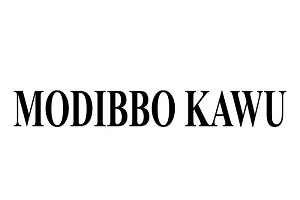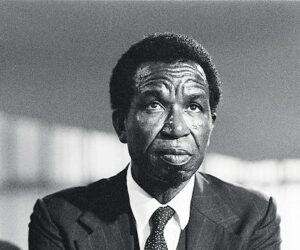The works of Cyprian Ekwensi, particularly his PEOPLE OF THE CITY, were a very good reflection of the 1950s/60s. Remember that archetypal city girl, JAGUA NANA? It was also the title of a popular highlife tune of those times, by Adeolu Akinsanya ‘Baba Eto’.
The evolution of urban culture couldn’t be divorced from our coming into being as an African and Nigerian people; they defined our lives and helped forge consciousness within those exciting developments. Anti- colonial sentiment emerged; the railways, built to extract raw materials and take colonial manufacture into the hinterland, also facilitated the growth of towns, where Nigerians met and exchanged anti-colonial ideas. These urban settings facilitated various musical influences confluencing to create Highlife.
In the North, we had the Sahara Dance Band in Jos and Bala Miller’s Great Pyramids of Africa. They did songs in Hausa, Igbo, Yoruba and even in minority languages like Ogori! Lagos was home to Bobby Benson, Victor Olaiya and Sam Akpabot all of whom Balla Miller told me, performed at the Independence Day Ball in October, 1960.
By the 1970s, new musical trends emerged, reflecting the assuredness of the oil boom years. Badejo Okusanya (Yomi’s father) was the first Nigerian to own a recording studio; the feat was acknowleged by Haruna Isola, in a song.
Tabansi Records and Rogers All-Stars were competing against colonial outfits such as Decca and Philips, to record Nigerian artists like Prince Nico Mbarga, Super Five, Warrior and Ikenga Super Stars; The Funkees and Wings International (with the late Spud Nathans) became some of the new bands emerging from the East soon after the war.
One of the great acts of the seventies was Ofege, a group of students from St. Greg’s Obalende, Lagos. They literally turned the world upside down with songs like Try and Love; Ofege; Whizzy Labo and Mandy. After two albums they disappeared but left an unforgettable impact. Nigerian producers like Odion Iruoje and Laolu Akins also came into their own!
Osibisa was big and had Ghanaians Teddy Osei, Kofi Ayivor, Mac Tontoh; Wendell Richardson from Guyana and Nigerians like Mike Odumosu and Laughty Lasisi Amao, who was tragically killed in America. Can we recall Kenny St. George? He did a song “listen to the Buddha” that was a big hit after FESTAC 77! He visits my offices regularly in Abuja today, espousing a mix of Islam, Buddhism and environmental awareness.
The Nigerian saxophonist, Peter King went to live in New Zealand. Fela was in some contest with Segun Bucknor for a while, after his (Fela’s) initial tiffs with Rex Lawson. Rex was the master of the nightlife before the Civil War.
He went back East and was returning to Lagos after the hostilities when he died in an accident. Sunny Ade did a tribute to him; his songs, Love Adure, Oh Koh, and his incredible dexterity with the trumpet can still be enjoyed even today.
IK Dairo was the master who did several songs in Hausa, especially his TUWO DA MIYA which told the story of his musical tour in Northern Nigerian in the 1960s. We are heirs to a rich social and cultural history. And our various cultures have added a nugget here, a punch there, to weave the complex tapestry that we (can all be proud of).
It might interest that Haruna Isola took SABADA from Hausa musical culture to incorporate into Apala; while Kalangu is Hausa just as Gangan is Yoruba. We can go on and on!


